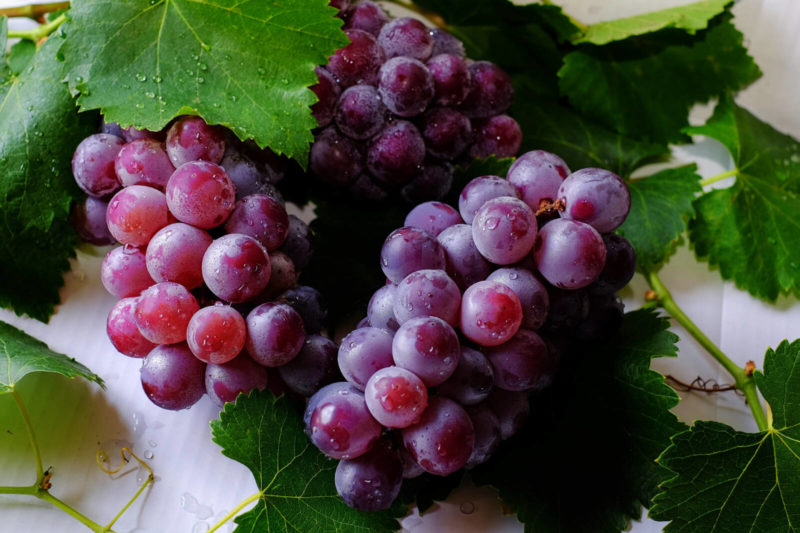To Jennifer English, wine is about place. Each glass tells the story of the land and the environment in which it was grown.
Wine “is a representation of where it is,” says English, owner of English Estate Winery in east Vancouver, in southwest Washington.
The region’s winemakers believe the region has a story to tell with its wines. To make their case to the world, the Southwest Washington Winery Association submitted its application this summer to designate the region as an American Viticultural Area.
Viticultural areas “will attract tourism more than just an association of wineries,” says Richard Meyerhoefer, association president and owner of Emanar Cellars in Battle Ground. “It’s going to benefit all the facilities that deal with wine in the area.”
Being part of a designated viticultural area means the vineyards and wineries here will be able to label their wines as estate grown.
“It guarantees that the grapes that have been grown and then processed into wine have come from this area,” says Roger Rezabek, co-owner of Rezabek Vineyards and chair of the association’s American Viticultural Area task force.
“There’s a large value for us to be able to do that,” says Tom Aspitarte, owner of Martha’s Vineyard of Skamania in Washougal.
“We will then be able to be recognized for certain kinds of wines that we are producing here,” Rezabek adds.
The proposed area, covering 2,100 square miles of Southwest Washington, would be named the Mount St. Helens American Viticultural Area. It would extend from the southwest corner of Skamania County north to Centralia, including Clark, Cowlitz and Lewis counties. The area would lie between the current Willamette Valley and Puget Sound viticultural areas. There are 20 such recognized areas in the state.
Around 140 acres of wine grapes are currently growing in Southwest Washington and the region is home to 30 licensed wineries, as well as several tasting rooms.
Vancouver is the birthplace of the state’s first wine grapes. The initial vines were planted at Fort Vancouver in 1825, according to the 1997 book by Ronald Irvine and Walter Clore, The Wine Project: Washington State’s Winemaking History.
The modern era of grape growing dates back to the 1970s when Joan and Linc Wolverton began their Salishan Vineyard and Winery in La Center. Not long after, English’s parents planted cuttings from the Salishan Vineyard, and English Estates Vineyard was born.
English’s father started an American Viticultural Area application for Southwest Washington 25 years ago, but then was diagnosed with cancer and couldn’t complete his work. He analyzed the soil and surveyed the geology even before he made the decision to start growing grapes in the region, English says.
The association submitted its application to the Tobacco Tax and Trade Bureau, an agency within the U.S. Treasury, which oversees the nation’s viticultural areas and wine production.
With the same soil, environment and growing days as Oregon’s Willamette Valley, Rezabek says Southwest Washington wines should be able to rise to that caliber.
“We certainly should be able to make some excellent wines.”
The soil where a grape grows impacts its flavour, Rezabek says. Southwest Washington has loam soil, similar to that of the Willamette Valley, with a low pH.
“We have to add lime in order to balance that and make sure the nutrients are picked up by the grapes because it is fairly acidic,” he adds.
At English’s vineyard, the soil soaks up water like a sponge but also drains well. It doesn’t need irrigation because the vines survive on rain collected in winter. The rocks in the soil retain heat, allowing the grapes to thrive.
Minerality is a characteristic often picked up by grapes grown locally, said Rezabek. That minerality comes from the ancient Missoula floods that impacted the region during the Ice Age, and a bit from volcanic dustings by Mount St. Helens.
The minerality is desirable for a number of wines, said Rezabek, especially those wines that are lightly oaked or unoaked.
“They have a nice crispness to them and delightful fruity flavours,” he says.
Meyerhoefer says one of the things that makes vineyards in Southwest Washington special is the diversity of grapes being grown. The proposed viticultural area ranges from the sloping hills of the Cascade Mountains at 1,200-feet elevation to the banks of the Columbia River at almost sea level.
“The diversity of what you can grow in those areas is what really makes us unique,” Meyerhoefer says.
Twenty grape varieties are currently growing at vineyards in the region: pinot noir, chardonnay, pinot gris, Riesling, muscat, pinot blanc, gewurztraminer, marechal foch, sauvignon blanc, gamay noir, pinot meunier, golubok, Zweigelt, Semillon, madeleine Angevine, leon millot, cabernet sauvignon, merlot, Siegerrebe and cayuga.
The process of becoming an American Viticultural Area can take a year or more, with reviews and comment periods.
“So we’ll be patient,” Rezabek says.
Learn more about the southwest Washington wineries, including a map to the region’s tasting rooms, at swwawine.com/wineries
– By Sarah Wolf, The Columbian, Vancouver, Wash.
Plan your adventures throughout the West Coast at westcoasttraveller.com and follow us on Facebook and Instagram @thewestcoasttraveller. And for the top West Coast Travel stories of the week delivered right to your inbox, sign up for our weekly Armchair Traveller newsletter!











 Two wheel journeys: new guidebook will help you explore Vancouver Island by bike
Two wheel journeys: new guidebook will help you explore Vancouver Island by bike